|
Early
observations of Fluorescence from wood of the narra
tree in the 1560's.
Fluorescence accidentally isolated in 1602 by an alchemist
who was experimentally baking substances in the search for
gold,
which, in this case, glowed in the dark, even after cooling.

painting by Joseph Wright, 1795
In
1669 Hennig Brand, also an alchemist, this time searching
for gold in evaporated urine, discovered phosphorus.
Ultraviolet light is absorbed by substances such as these
and the energy is slowly released as visible light, over a
period of time,
due to substances known as "impurity elements".
Chemiluminescence
at Chemistry Explained
Hennig
Brand and Phosphorus at Chemistry Explained
|

discovermagazine.com
|
Brief
discussion of luminous creatures -
tiny fish, fireflies, etc. -
How
they are "light efficient" ("cold light");
How this is possible due to a special enzyme.
Bioluminescence
at Smithsonian Institute
|
|
|
Glow
in the Dark Microbe Lamp

©
Glowee
|
Molecules
of Rhodopsin detect light
-
detail of the Retina
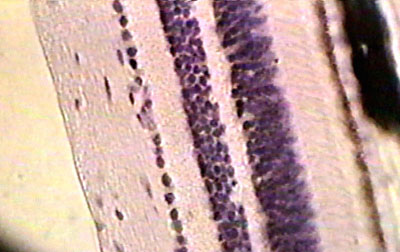
http://bio.sunyorange.edu
|
Mention
made again of "opsins" from the
retina -
this time to state that the "pain" that
is felt when eyes are "adjusting" to the
light after exiting a dark room
(such as leaving a movie theater & entering
bright sunlight)
is due to the rapid production of these light sensitive
proteins by the eye due to the fact they were used
less in the dark, therefore the eye had decreased
manufacture.
opsins
in the role of translating sense perception into
electrical signal for visual cortex:
Scotopic (night) and Photopic
(day) Vision.
Rhodopsin
and the Eye at University of Bristol
|
|
|
Atmospheric
Refraction
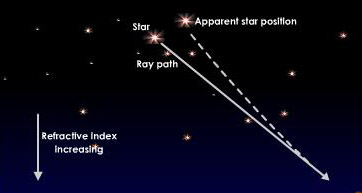
physics.tutorvista.com
|
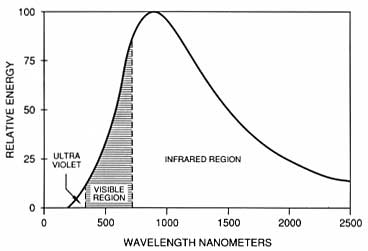
www.palagems.com
This
chart demonstrates how most energy
produced by Filament Bulbs is heat energy,
not visible light
|
Contrast
of Filament Light Bulb with Fluorescent Bulb
Tungsten
metal is the preferred filament due to its high
melting temperature, luminosity & durability.
Filament
bulbs are bright, but produce more heat than light.
Fluorescent
bulbs produce so-called "cold light",
in other words more light than heat. Unlike the
heating of the filament,
the gas in the tube is stimulated by electricity,
which is energized to radiance.
Filament Light Bulb vs. Fluorescent Bulb at Diffen
|
|
|
|
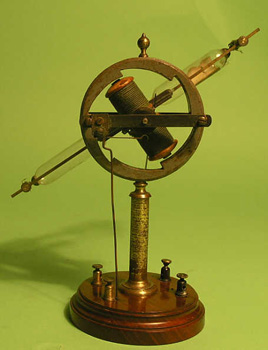 www.earlytech.com
www.earlytech.com
|
|
Scientists
couldn't get the rays to pass through the
glass in order to better study them, but by
1891 it was discovered that the rays would
pass through ultra thin aluminum, proving
their subatomic size. Several scientists worked
independently over about 30 years on these
studies, in some cases modifying the tube:
|
Note
the development of the Fluorescent Screen
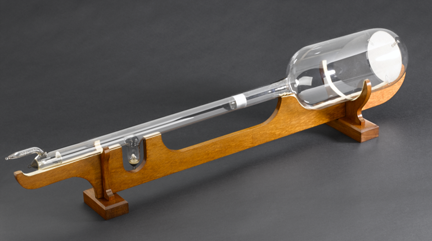
www.nationalmediamuseum.org.uk
|
|
|
|
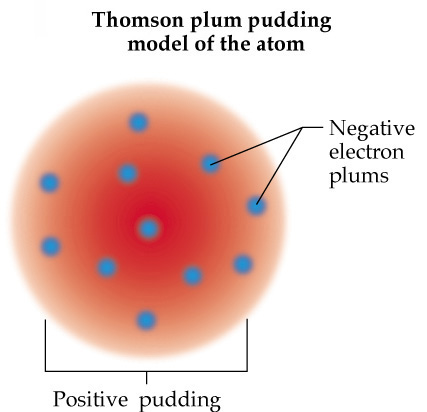
© 2000 Benjamin/Cummings;
imprint Addison Wesley Longman, Inc. |
|
|
|
Such
control of electrons led to the development
of the television tube with its "electron
gun", itself a cathode (electrode with
negative charge). The beam is directed to
a fluorescent screen, but first must pass
through a thin metal coating (deposited by
vaporization) to increase brightness.
|
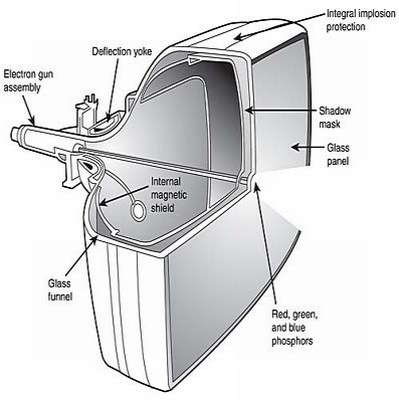
devhardware.com
Electron
Gun at Wikipedia
|
|
Infrared
microscopy, which must be specially photographed
because the rays are outside the visible
spectrum, nevertheless provides better magnification
(5000x) than visible light (3000x) because
the rays are shorter. Objects smaller than
half the wavelength of a violet lightwave
cannot be "resolved" by ordinary
light.
Far
superior even to infrared microscopy in
magnification because of the tiny size of
the electron, electron microscopy nevertheless
produces a silhouette-like image by "refocusing"
the electrons after they pass around the
object. (This effect is similar to the passing
of pollen through a screen by the wind and
having an impression of the screen design
on the door behind the screen).
Optical
rules of "refraction" do not apply.
|
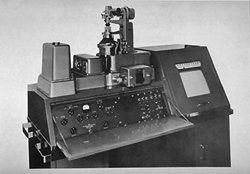
photonics.com
Infrared
Microscopy at Wikipedia
|
|
Aurora
Borealis - The "Northern Lights" at
earth's poles
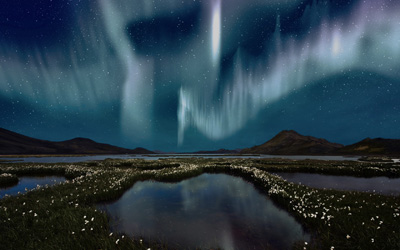
Wallpaperstock.net
|
Solar
flare activity releases "prominences"
as long as 600,000 miles long - which send electrons
to earth within about two days. This produces an
"electric storm" and also lights
up the northern sky.
The
electrons are drawn to the magnetic poles, where
they stimulate the nitrogen & oxygen atoms to
fluorescence.
A
laboratory test of suspending a magnetized iron
sphere & directing a electron beam at it demonstrated
the electrons diverting to the poles and producing
a blueish-white glow.
This
magnetic phenomena also produces the "electron
free zone"
at the equator.
Northern
Lights at Northern Lights Centre
Aurora
Borealis at EarthSky
Solar
Wind at Wikipedia
|
|
lecture
contents
top
|